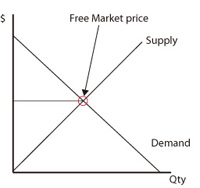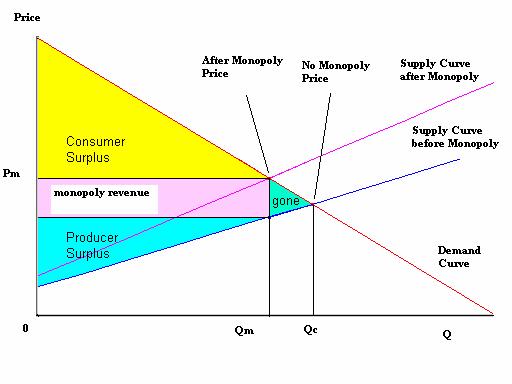Taiwan Patent Office Fees
Posted on Wednesday, March 2, 2011
 by Jeffrey Chang, NAIP Editorial
by Jeffrey Chang, NAIP EditorialWhen devising IP strategy, for all the consideration given to markets, competitors, suppliers and so on, one thing always seems to be the deciding factor: cost. Although most economies are already two years removed from the global economic crisis, corporate budgets have yet to fully recover, and IP managers need details to shape strategy effectively. And as Taiwan continues to gain greater importance for high tech industries, the costs are no small investment. To understand patent costs, let's take a look at Taiwan Patent Offices Fees, the latest of which came into effect on January 1, 2010
The absolute bare costs for Taiwan patents from application to grant and the first 3 years maintenance fees are:
Invention Patent - NT$19,000 (approximately US$ 633*)
Utility Model Patent - NT$ 11,500 (US$383)
Design Patent - NT$ 11,500 (US$383).
*based on an exchange rate of US$1.00 to NT$ 30.00
Don't jump for joy yet—these costs do not include fees for amendments, divisionals, appeals and other options. Most significantly, they do not include agent/attorney fees, which make up the lion's share of any patent cost. But since these services vary widely in both price and quality, we will not cover them here.
Patent Office Fees – A Detailed Look
(All Fees in New Taiwan Dollars)| Invention Patent Fees | ||
| Filing | 3,500 |
|
| Request for Early Publication | 1,000 | |
| Substantive Examination | 7,000 | requested within 3 years of filing |
| + 800/claim in excess of 10 | ||
| + 500/page in excess of 50 | ||
| Re-examination | 8,000 | + 500/page in excess of 50 |
| Request for division | 3,500 |
|
| Request for correction of specification or drawings | 2,000 |
|
| Request for other change(s) | 300 | for two or more changes: 300 |
| Issue | 1,000 |
|
| Annuity | 2,500 | per year (1st-3rd) |
| 5,000 | per year (4th-6th) | |
| 8,000 | per year (7th -9th) | |
| 16,000 | per year (10th & beyond) | |
| Request for invalidation | 10,000 |
|
| Request for extension of patent term | 9,000 | |
| Request for compulsory license of a patent | 100,000 | |
| Request to revoke compulsory license of a patent | 100,000 | |
| Filing a supplemental brief, reasons for correction or evidence in an invalidation | 2,000 | |
| Request for conversion of an application into an invention patent application | 3,500 | |
Aside from requisite base costs (in blue), other commonly incurred fees are excess claim or page fees, which were only instituted in January 2010, and the re-examination fee—essentially an additional stage for examination of an application.
Note that no additional fees are required for accelerated examination, claiming priority rights, delaying publication, or even extensions of term for replies to office communications. Furthermore, no official fees are incurred for filing appeals. Compare this to the USPTO, where filing a notice of appeal incurs a US$ 540 Office Fee.
Furthermore, in certain situations TIPO will refund the Substantive Examination or Re-examination fee. If the applicant withdraws his application before the first examiner opinion is issued, the applicant may apply for a refund of the substantive examination fee, including excess claims and excess pages fees, or the reexamination fee, including excess pages fees.
If an English translation of the first page and abstract of the specification is submitted with the application, an NT$ 800 discount is applied to the filing or conversion fee.
| Utility Model Patent Fees | ||
| Filing | 3,000 |
|
| Filing a divisional application | 3,000 | |
| Applying for correction of specification or drawings | 2,000 | |
| Request for other change(s) | 300 | for two or more changes: 300 |
| Issue | 1,000 |
|
| Application for a Technical Report | 5,000 | |
| Annuity | 2,500 | per year (1st-3rd) |
| 4,000 | per year (4th-6th) | |
| 8,000 | per year (7th & beyond) | |
| Filing an application of invalidation | 9,000 |
|
| Filing a supplemental brief or evidence in an invalidation | 2,000 | |
| Request for conversion of an application into a utility model patent application | 3,000 | |
Aside from required costs, the most common fee is the application for a Technical Report. The Technical Report is a valuable tool for exercising the rights of a Utility Model Patent and is highly recommended, as it may absolve the patentee of damages claims should the Utility Model Patent ultimately be proven invalid. If the Utility Model Patent is revoked or abandoned before the report is complete, production of the technical report will be cancelled and the fee refunded.
If a utility model application is converted to an invention application, and an English translation of the first page of the specifications and abstract are provided, the conversion fee is reduced by 800 NTD.
| Design Patent Fees | ||
| Filing | 3,000 |
|
| Filing an associated design patent | 3,000 | |
| Filing a divisional application | 3,000 | |
| Re-examination | 3,500 | |
| Applying for correction of specification or drawings | 2,000 | |
| Request for other change(s) | 300 | for two or more changes: 300 |
| Issue | 1,000 |
|
| Annuity | 2,500 | per year (1st-3rd) |
| 3,500 | per year (4th-6th) | |
| 5,000 | per year (7th & beyond) | |
| Filing a supplemental brief or evidence in an invalidation | 2,000 |
|
| Filing an application of invalidation | 8,000 | |
| Request for conversion of an application into a design patent application | 3,000 | |
In comparison, design patent costs are simpler. One particular option of note is conversion of an application into a design patent application, which may be useful if the fast-moving market necessitates strategic changes. If the conversion is made in time, fees from substantive examination of invention application, or technical report may be refunded as well.
Annuities
Another point of note is payment of annuities. At the USPTO, annuities (maintenance fees) must be paid in 3-year blocks. At TIPO, patents are renewed per year, although pre-payment is possible to reduce hassle and risk! And if fees are adjusted during this time period, fees must be re-paid (if higher) or they are refunded (if lower). If annuities are not paid on time, a surcharge of 100% is incurred and the fee must be submitted before 6 months from expiration of the deadline.
Furthermore, annuities can be reduced under certain conditions:
- A patentee who is a natural person, foreign school, domestic or foreign small and medium enterprise may apply for fee reduction in the amount of NT$800 deducted per year for the 1st - 3rd year; and NT$1,200 deducted per year for the 4th - 6th year.
- A patentee who is a natural person with no capital for annuity payment may apply on a yearly basis to the Patent Authority for annuity exemption.
| Other Official Fees | |
| Recordal of assignment or inheritance for the right to apply for patent | 2,000 |
| Recordal of assignment or inheritance for the patent right | 2,000 |
| Recordal of license of patent right | 2,000 |
| Recordal of pledge over patent right | 2,000 |
| Recordal of extinguishment of pledge over patent right | 2,000 |
| Recordal of other changes pertaining to pledge over patent right | 300 |
| Recordal of trust of patent right | 2,000 |
| Recordal of obliteration of patent trust | 2,000 |
| Recordal of ownership of patent trust | 2,000 |
| Recordal of other changes pertaining to patent trust | 300 |
| Applying for a certified copy of a document | 1,000 |
| Request for an interview | 1,000 |
| Request for an inspection of the experiments, models or specimens conducted/submitted | 5,000 |
Conclusion
Finally, one particularly important area that patent applicants must understand is TIPO's "attitude" toward deadlines and application requirements. In many patent offices, like the USPTO or EPO, in many situations where an application has "died" due to missing documents, late responses or unsubmitted fees, the application may be revived—upon payment of a hefty surcharge. In TIPO, the procedure is slightly different:
- When a person filing a patent application or going through any other procedures in connection with patent matters has delayed beyond any statutory or given time limit, or has defaulted in payment of any fees prior to the deadline fixed therefor, the application filed or the other procedures instituted by him/her shall be dismissed, unless his/her delay to act within the given time limit or his/her failure in payment by the deadline has been corrected before an administrative decision is rendered by the Patent Authority.
Essentially, if you fail to submit monies or documents in time, you are able to correct the mistake--but only if you are faster than TIPO. No surcharges required. TIPO does notify applicants of missing documents or late payments for SOME options, but ultimately proper submission of many fees and requirements is entirely the responsibility of the applicant. That is why an experienced and reliable patent partner is critical to the success of an application.
LINKS:
TIPO Regulations of Patent Fees
http://www.tipo.gov.tw/en/MultiMedia_FileDownload.ashx?guid=7cccfc3a-3953-4b1d-9435-6838cdd5951e
Read more...






 --------------eq. 1
--------------eq. 1 -----------eq. 2
-----------eq. 2 > 0
> 0 and
and  are the marginal revenue marginal cost of a monopoly respectively.
are the marginal revenue marginal cost of a monopoly respectively. 




